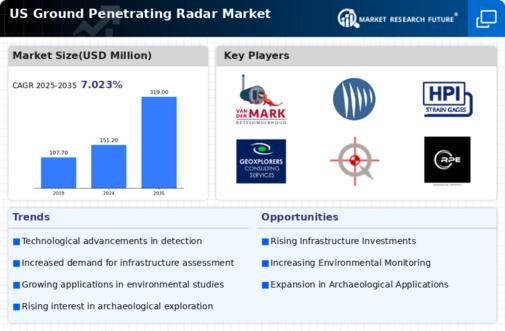The US Ground Penetrating Radar Market is characterized by a dynamic landscape where various companies strive to leverage technology, innovation, and application diversity to maintain or enhance their competitive positioning. With a growing demand for subsurface exploration across sectors, including construction, archaeology, and environmental studies, firms are dedicating substantial resources towards research and development as well as strategic collaborations to introduce advanced products and expand their market share.
The competition is influenced by factors such as technology advancements, regulatory frameworks, and end-user requirements, leading to a vibrant and competitive market environment that encourages companies to differentiate themselves through unique offerings and superior service.
Vandermark has established a prominent presence in the US Ground Penetrating Radar Market, recognized for its robust product lineup and customer-centric approach. With an emphasis on cutting-edge technology, Vandermark is known for optimizing its radar equipment to cater to various applications and industries, ensuring high accuracy and reliability in subsurface investigations. The company’s strengths lie in its ability to integrate innovative solutions that enhance data quality and user experience, alongside a comprehensive support system for its clientele.
This customer-focused innovation has solidified Vandermark’s reputation as a trusted player within the market and has been instrumental in expanding its outreach across various sectors, thereby driving consistent growth.US Radar, on the other hand, is noted for its specialized focus on the Ground Penetrating Radar technology tailored specifically for infrastructure assessments and utility mapping in the US.
Its commitment to high-performance systems has positioned US Radar favorably in the market, with key products offering high-resolution imaging capabilities that cater to critical applications such as locating buried utilities and evaluating structural integrity. Additionally, US Radar has been involved in strategic partnerships and collaborations aimed at enhancing technological capabilities and expanding its service offerings. The company's competitive advantage is further reinforced by its strong aftermarket support and educational initiatives, catering to both new and existing users in the U.S. market.
These strengths, combined with an increasing focus on M&A activities, have enabled US Radar to consolidate its competitive standing and amplify its influence within the Ground Penetrating Radar sector in the US.
















